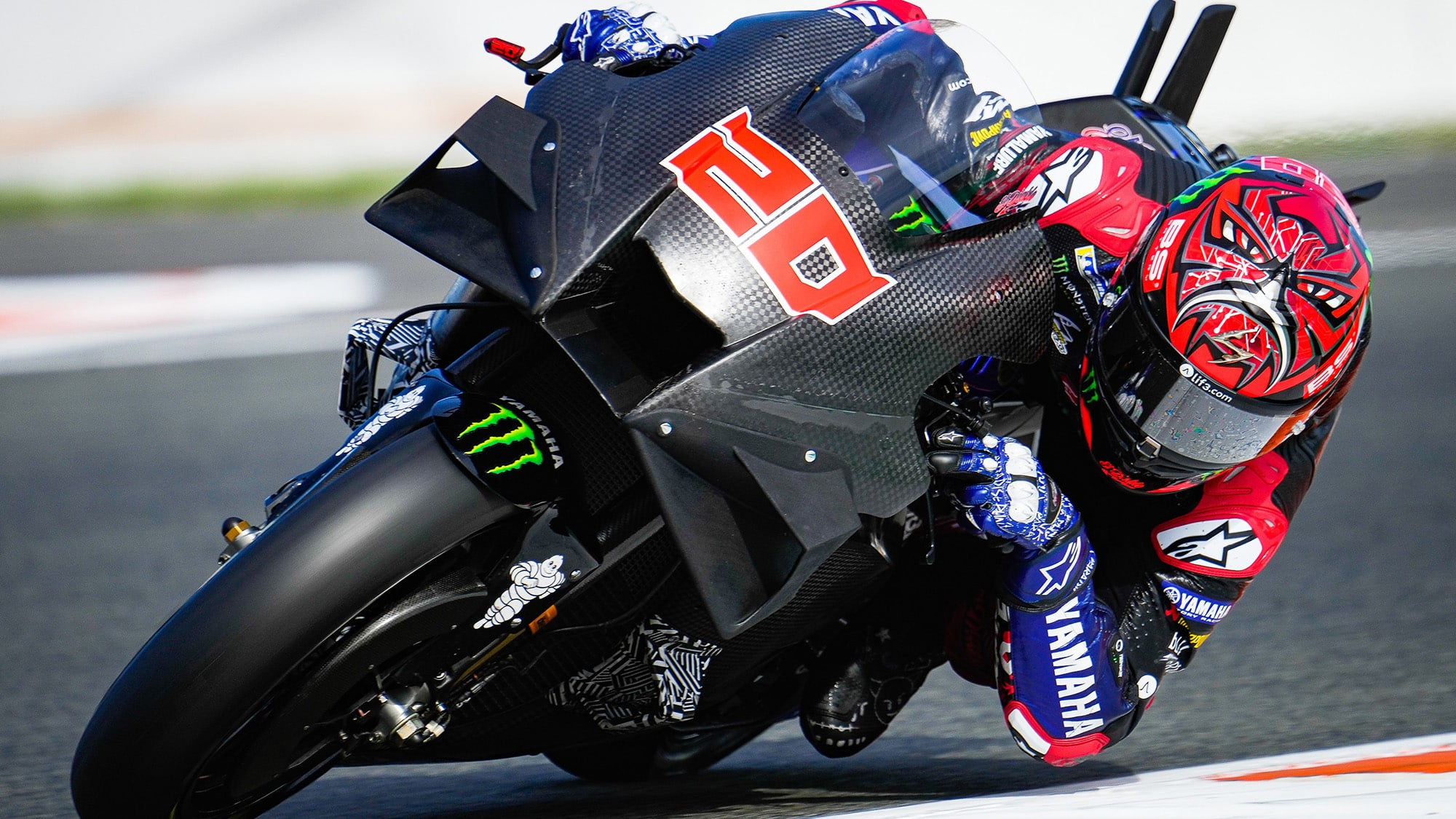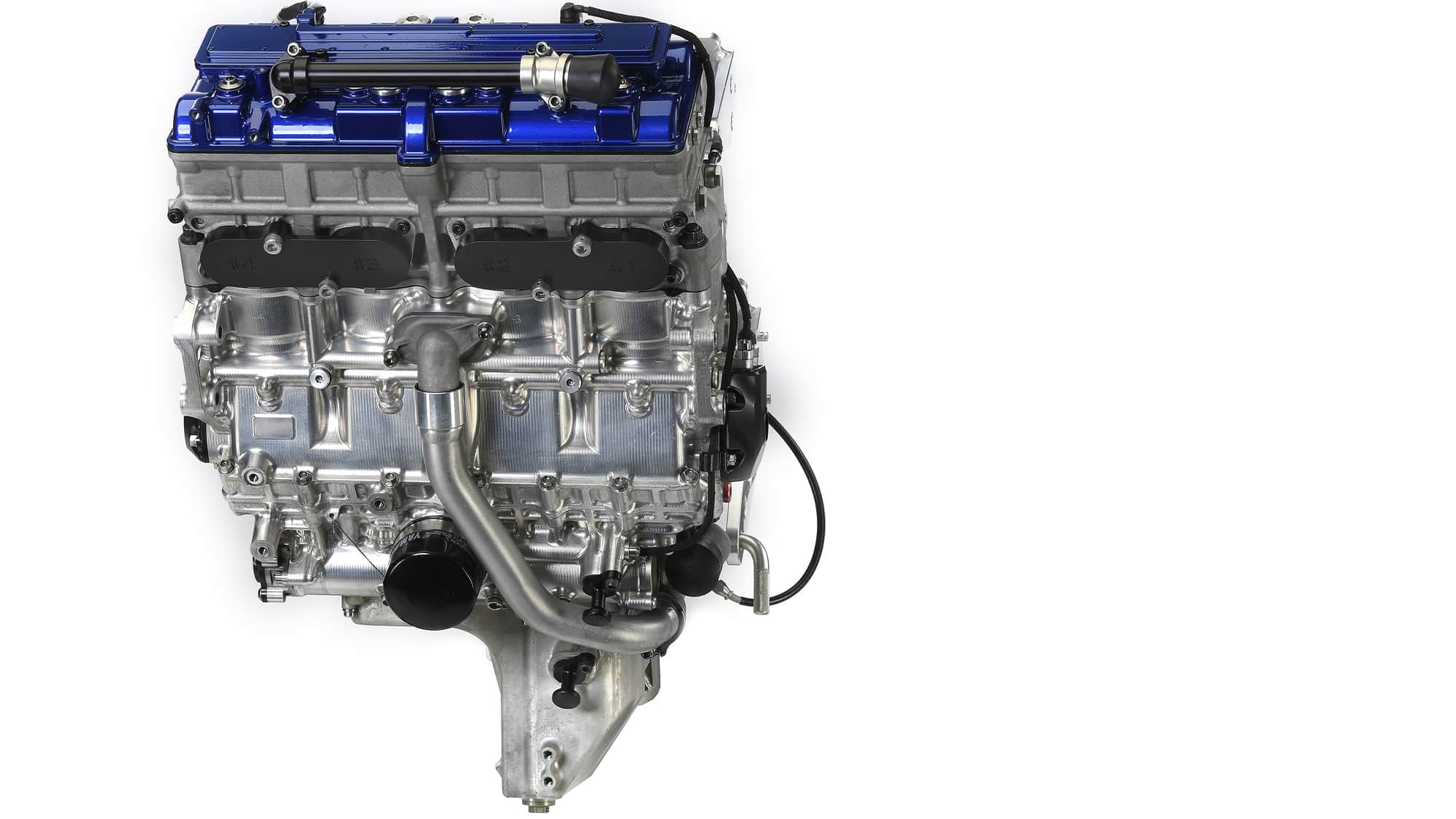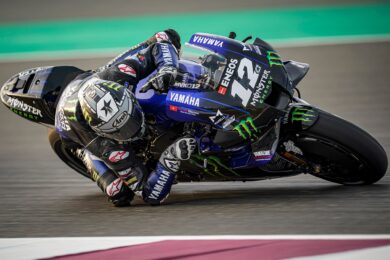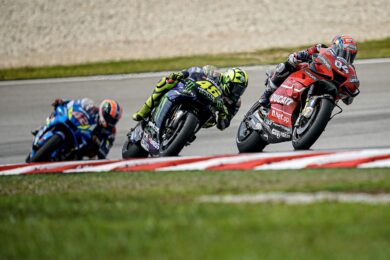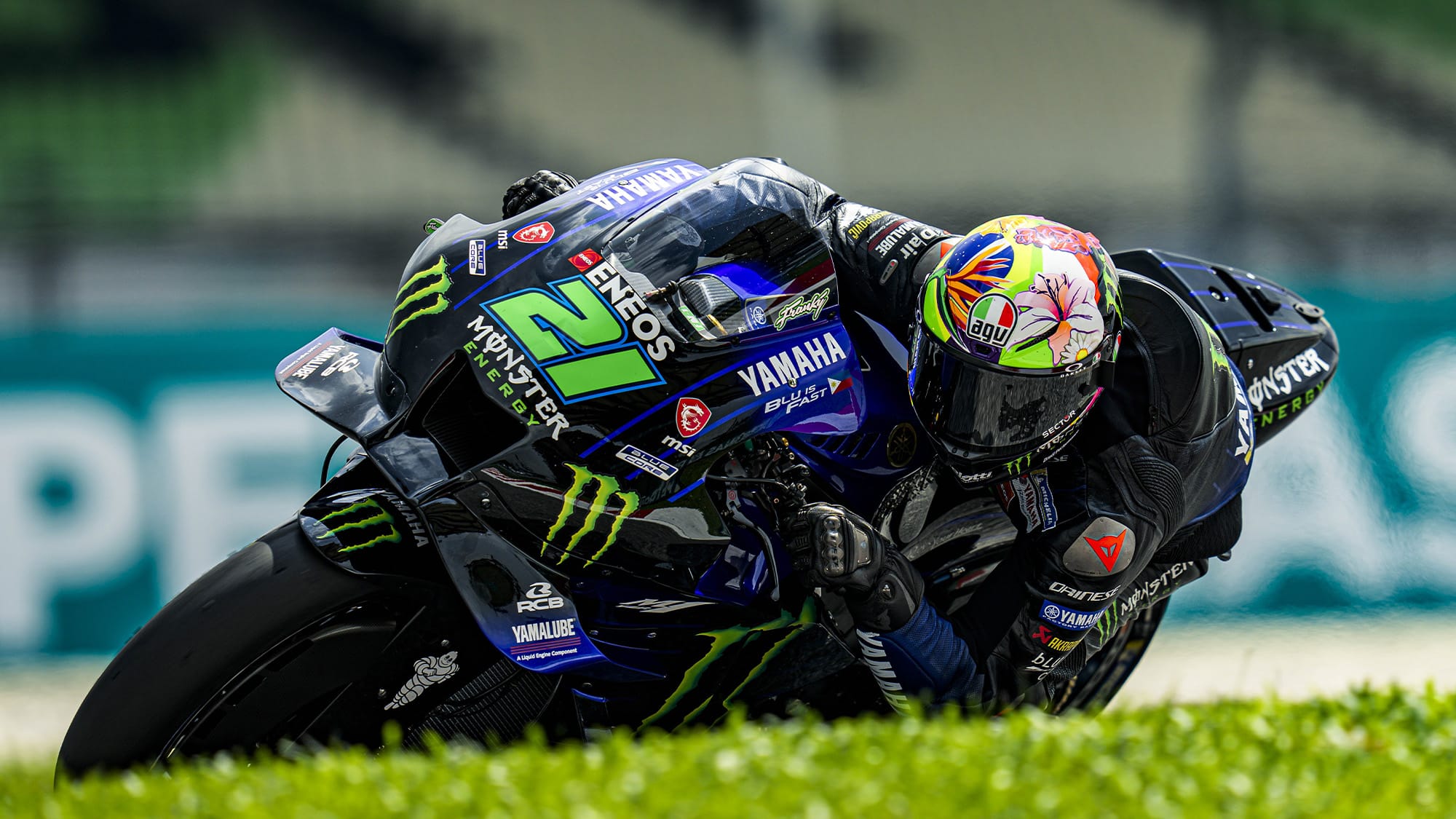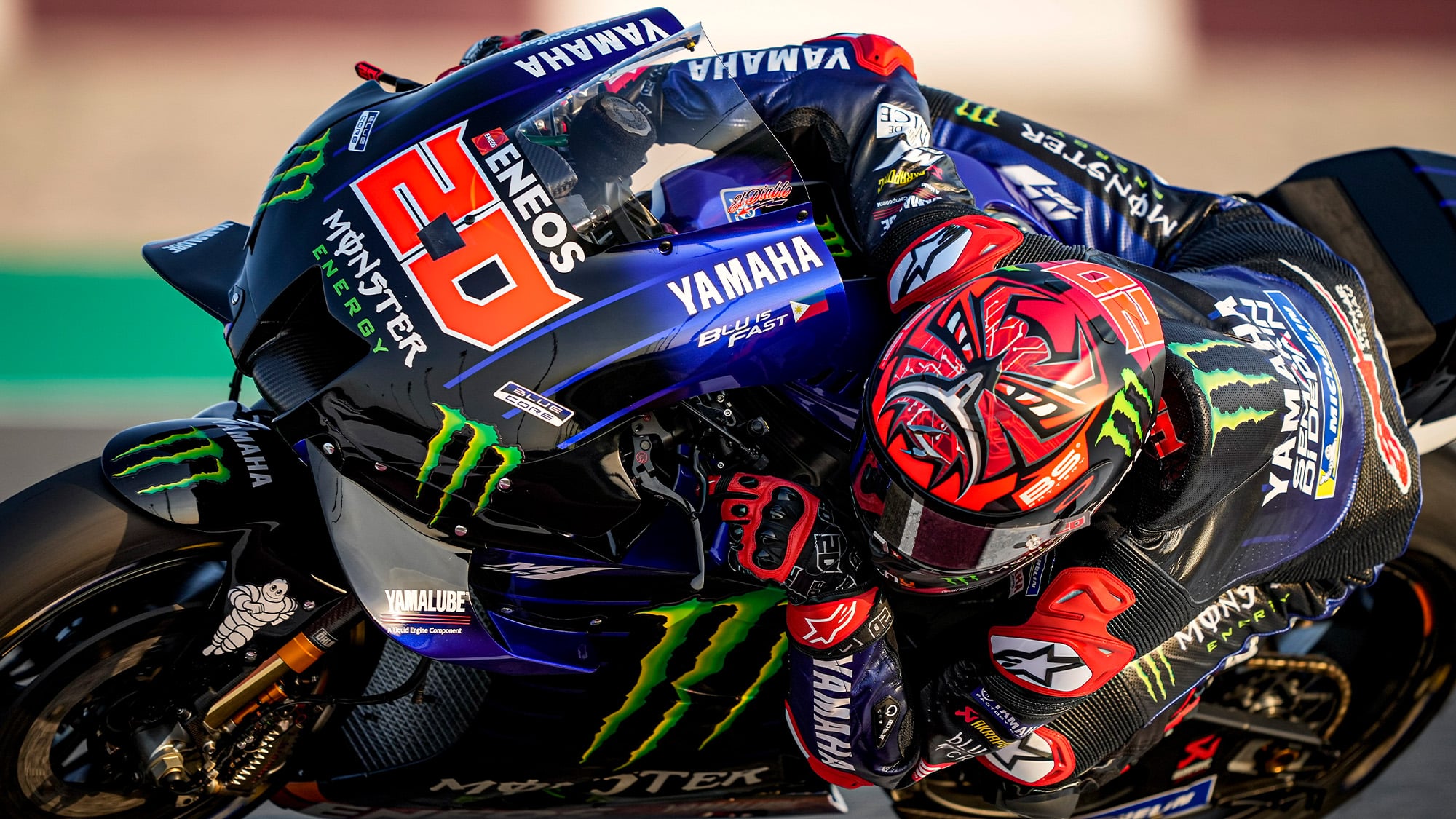This is why Yamaha has been working to make its M1 work more like a V4, via downforce aero and different geometry, so its riders can fight with their V4 rivals. And this is why the M1 is no longer the neutral, effortless machine it once was, so it needs to be manhandled more like a V4, which is what Quartararo does.
“Everyone thinks the Yamaha is a smooth bike, but not any more,” says factory test rider Cal Crutchlow. “You used to be able to ride it with one hand and you’d have rookies on satellite bikes getting podiums, but now Fabio is the only guy who can get the most out of the bike because it’s more aggressive. That’s a combination of geometry, downforce aero and so on. And by the way, I’m a firm believer in downforce aero because at 200mph it’s safer with the front wheel on the ground.”
While Quartararo has been able to get the maximum out of the point-and-squirt M1 during the last couple of years, Yamaha’s other experienced riders – Valentino Rossi, Franco Morbidelli and Andrea Dovizioso – have scratched their heads, wondering why the M1 is no longer the friendly beast it used to be.
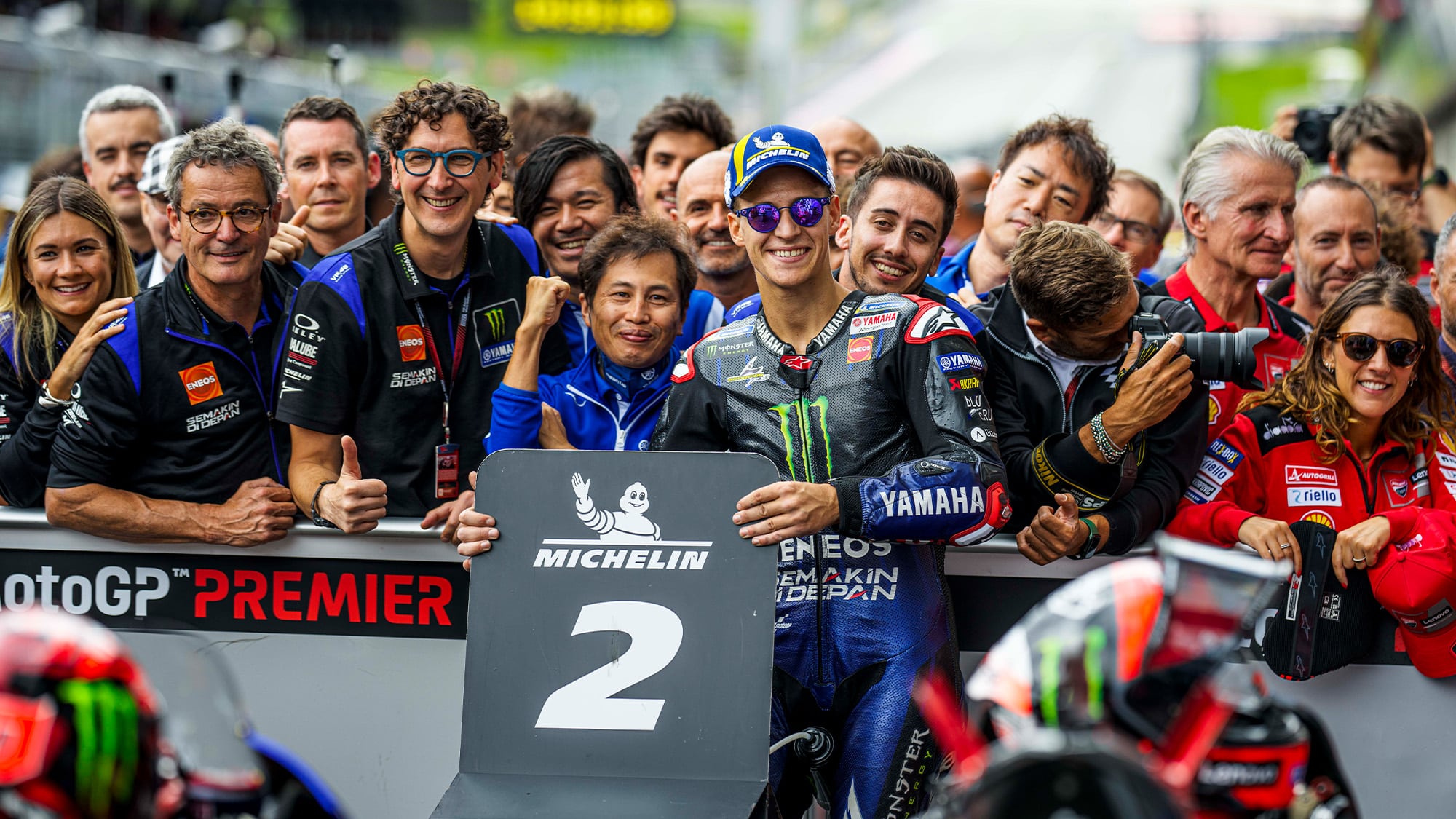
Quartararo, with crew chief Gubellini and Takahiro Sumi, general manager of Yamaha’s motorsports development division, to his left, after his superb second place at Red Bull Ring last August
Yamaha
If the 2021 MotoGP champion had had another ten horsepower last year he probably would’ve successfully defended his championship. Yamaha engineers calculated he lost between two- and four-tenths of a second per lap due to poor acceleration and top speed, so their big focus for 2023 is to regain at least some of that time.
But can Yamaha do it? The company has hired former Ferrari Formula 1 engineer Luca Marmorini to bring some F1 magic, but even F1 engineers are subject to the laws of physics. Marmorini’s job isn’t just increasing power by conventional tuning, it’s getting around the problems of the inline-four’s wider crank which can become unstable at ultra-high rpm, causing crankshaft vibration and valve float.
“Aprilia and Ducati have closed the gap in the turning ability of their bikes”
Obviously Suzuki found something last year, because the GSX-RR usually had more top speed than the Yamaha, but not at Valencia, where Rins never had anyone to slipstream. The average of his five best top speeds during the last race was 202.3mph (325.8km/h), against Quartararo’s 203.8mph (328.2km/h). Fastest, of course, was a Ducati (Enea Bastianini’s) at 208.6mph.
Marmorini has definitely found something, but will it be enough to beat Ducati’s dominant Desmosedici?
“The new bike is fast – you can definitely feel the difference, pretty much everywhere,” adds Crutchlow. “Top speed is the main thing they’re looking for and they’ve done a much better job on that. The big thing now is corner exit, because the Ducati is so strong on the exit of the corner – they just go.”
Perhaps Yamaha should hire a Suzuki engineer or two…
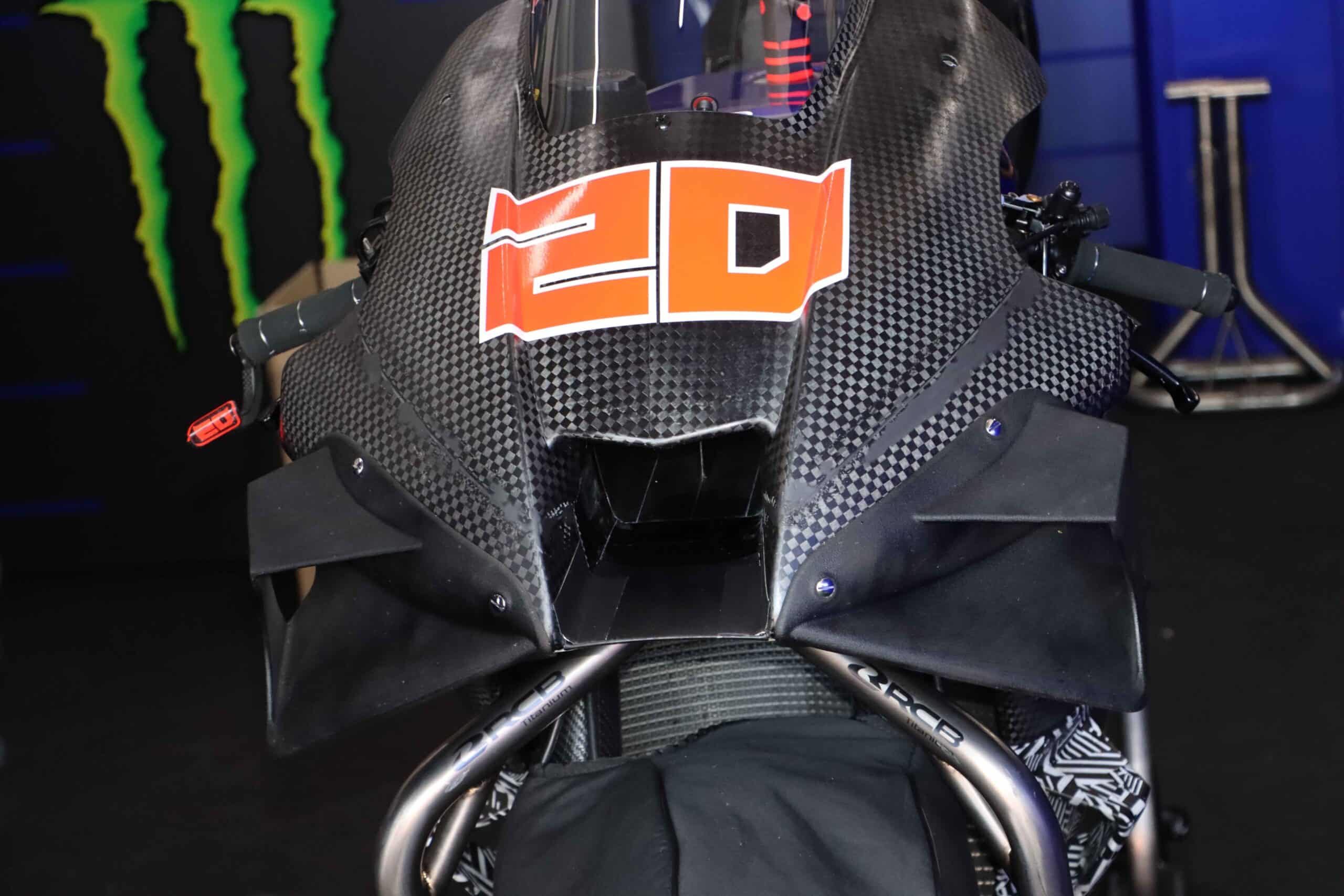
Yamaha’s 2023 front end – this is why the M1 needs more power, not only for more speed, but to allow it to run more downforce aero for better cornering grip
Oxley
Quartararo’s crew chief Diego Gubellini has already found better corner-exit performance from the M1, using the benefits of downforce aero to change the bike’s geometry for better acceleration, so what else has he and Yamaha got in store for 2023? We asked him at Valencia…
Oxley: We saw Fabio struggling with a lack of power throughout 2022 – would you blame that for some of his mistakes, like his crash during the Phillip Island race?
Gubellini: To ride with the other guys Fabio is very much on the limit, riding without any margin, basically. And if you are over the limit at every corner on every lap then it’s easy to make mistakes. So, yes, the Phillip Island crash happened because he was riding over the limit.
During this season we learned that at many tracks where in the past we were very strong that it’s not like that anymore, because Aprilia and Ducati have closed the gap in the turning ability of their bikes, so now we are fighting with the same turning performance but with less power than them. Like here at Valencia there are a lot of tight corners, which was an advantage for us in the past, but now not really, so it’s not easy.
Your main aim for 2023 is more straight-line performance, so how’s that going?
We’ve found some improvements in speed and acceleration. We are trying hard to get a better engine but it’s not a one-day transition, it’s something that needs time. That’s why at every test we’ve tried to bring some parts to improve power. After this race and test we will have some more details to try in that area.
How much more power do you need for 2023?
I cannot say exact numbers but compared to 2022 we need much more – we need a big step!
We estimate, depending on track layout, that we lose between two and four tenths per lap with the 2022 engine, so this is something Fabio needs to compensate for in his riding. For sure this is not easy for him, so we need a big step.
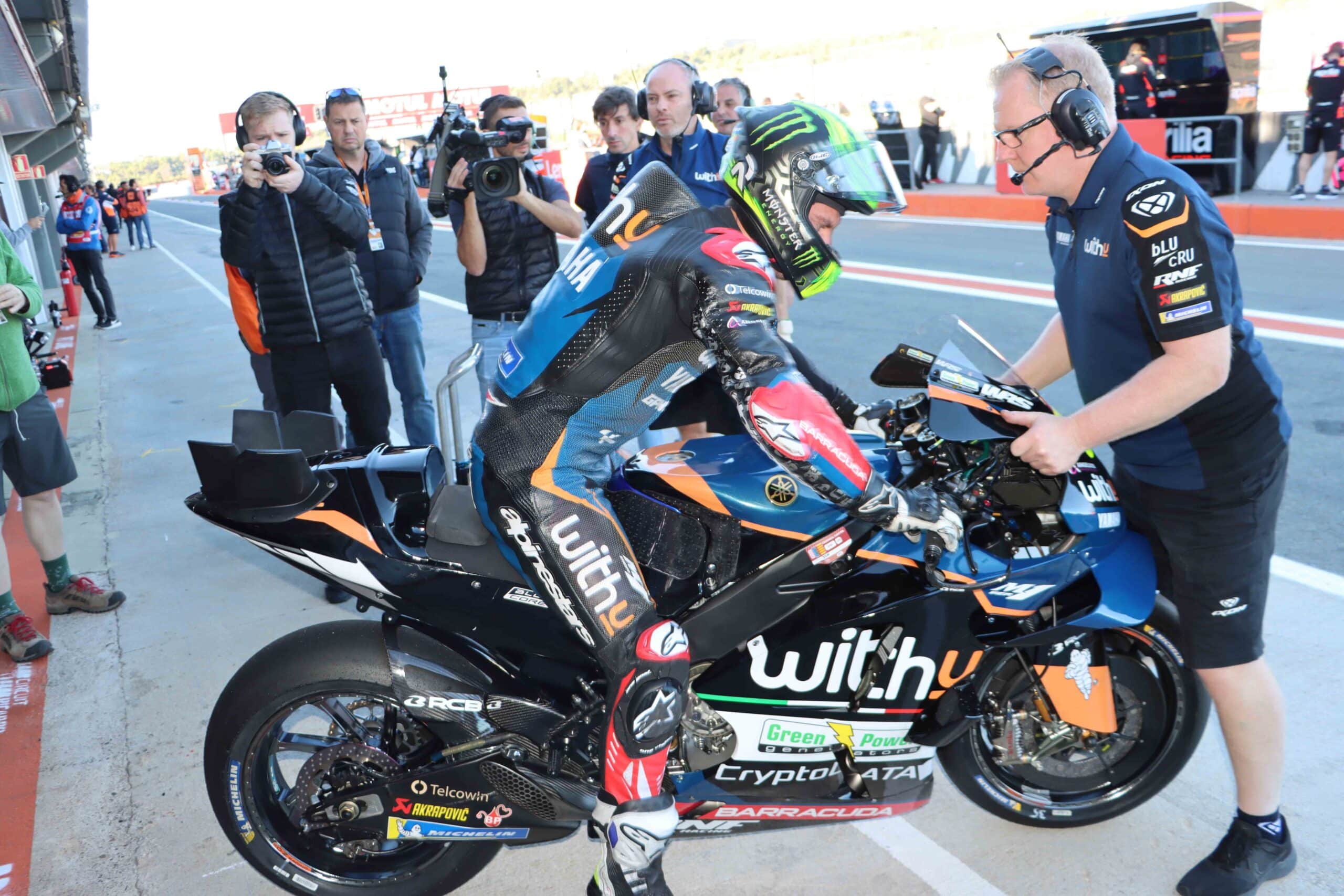
Crutchlow tries new seat aero at Valencia. The winglets increase rear load during braking and mid-corner but can increase wheelies – it’s all a balance
Oxley
Do you think you can make enough power from an inline-four?
I think it isn’t only engine and power, I think it’s more complex than that, because the riding style we need with our bike isn’t only related to the engine. It’s, let’s say, the DNA of our bike, combined with Fabio’s riding style, so we are trying to figure out how to improve this part of our performance.
There’s also the chassis, aerodynamics and so on, so there are a lot of things that can improve the pure performance of the motorcycle and how to get that performance.
